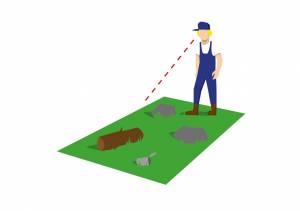The trend is towards high-grass mowing
Cultivated landscapes worldwide have changed significantly in recent decades. Due to structural changes in agriculture, many areas are used more intensively while in some cases peripheral areas are no longer being used at all.
This gives rise to the following trends:
- Shrubbery/forest cover is increasing, resulting in the reduction of flora and fauna diversity in peripheral areas
- A dramatic loss of species in intensively-maintained green areas
This merits the following countermeasures:
- Keep peripheral areas (meadows, orchards, slopes, etc.) open via economically efficient mowing methods
- Adapt mowing procedures in peripheral areas, i.e., reduce the number of mowings per year and push back the first mowing
- Adjust the mowing time to accommodate insects and bees – early in the morning with overcast skies or late in the evening are best
- Create rotational fallow land or leave old grass strips untouched
Rethinking the maintenance of green areas is necessary to protecting biodiversity. Thus high-grass mowing is more than just a trend: it represents a step to protect the environment and, above all, to reduce bee mortality.
Examples of AS-Motor device implementation for environmental protection and nature conservation:
Meadow orchards preserve our ecosystem by functioning as bee pastures, promoting biodiversity. It is thus important that mowing does not occur until flowering (end of June – middle of July). Following this guideline plants in the meadow can quickly grow to a height of 100 cm or higher, terrain ideally suited to AS-Motor’s Allmähers and ride-on mowers.
Cultivation of orchard meadows and other peripheral areas requires mowing only 1-2 times a year, to keep areas free of shrubs and bushes. In this time grass can grow 60-100 cm high, requiring outstanding mulching capabilities. AS-Motor devices have been engineered precisely for this purpose.
Other advantages of high-grass mowing with AS-Motor machines:
Reducing the number of mowings per year not only makes sense for environmental reasons, but also offers economic advantages by minimising time, personnel expenditure, and operating costs such as fuel and wear parts. Mulching and uniform cutting placement also eliminates the need for cost-intensive removal.
Naturally, extensive care with only 1-2 mowings per season also translates to significantly lower emissions in the form of exhaust gas and noise.


